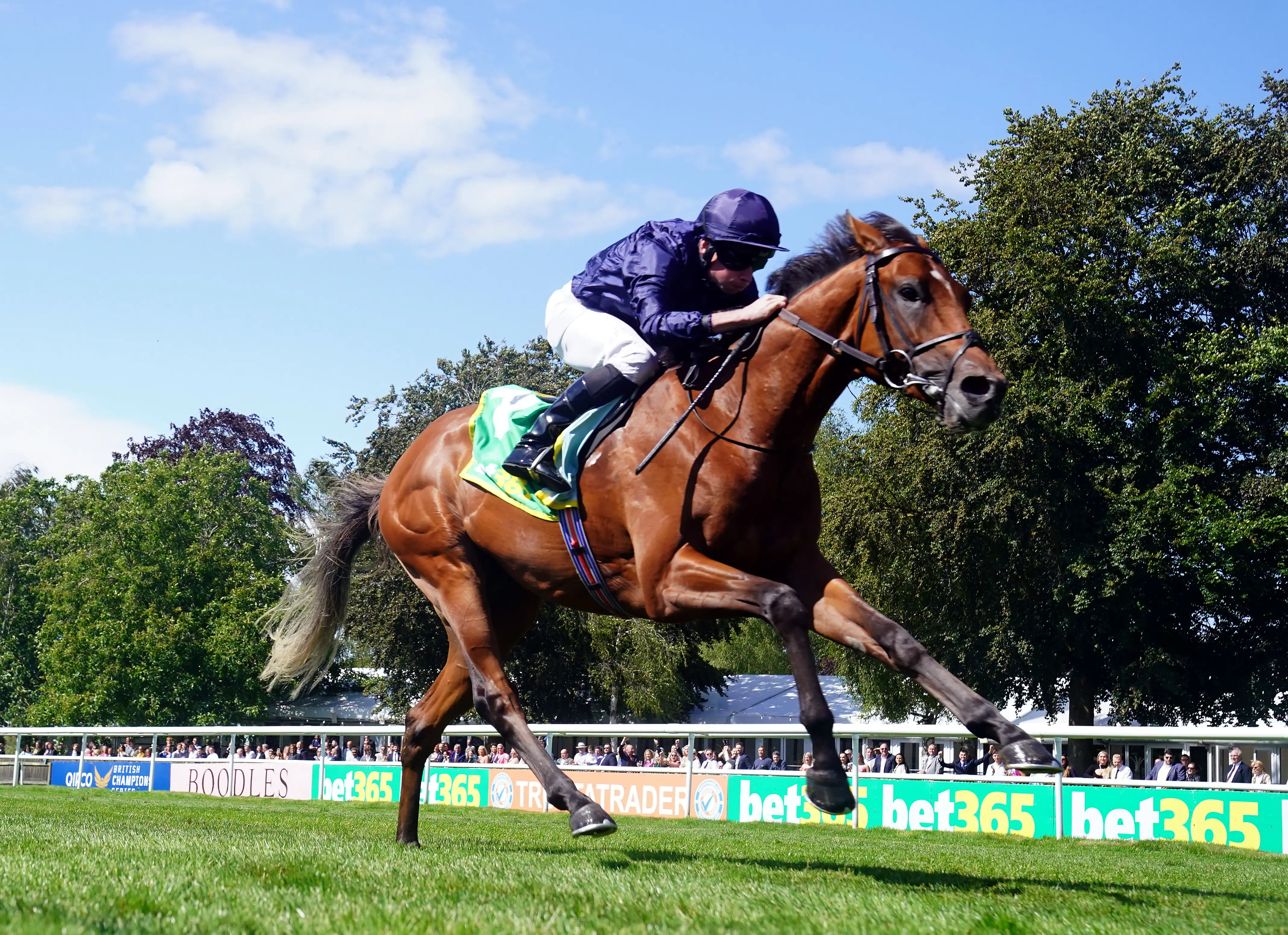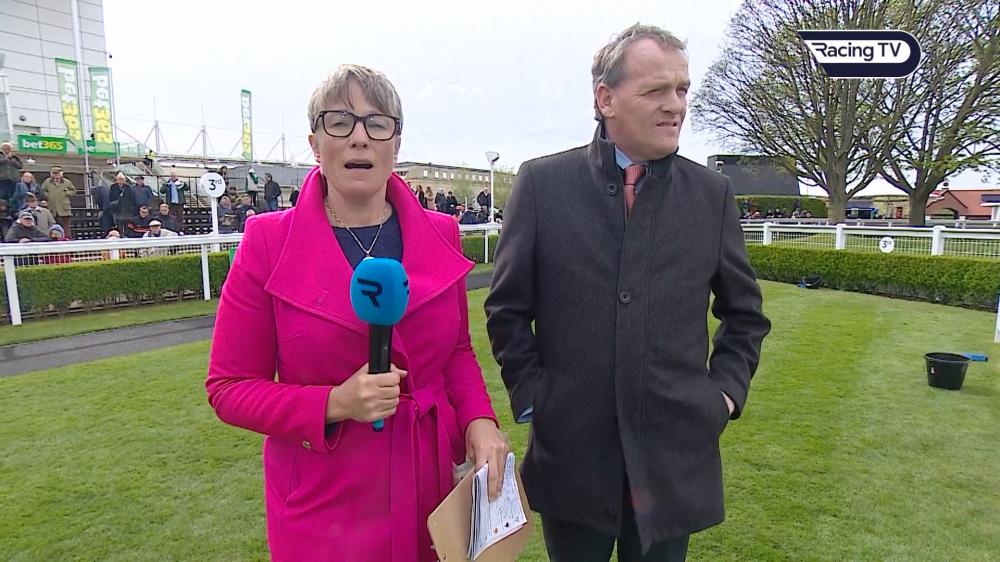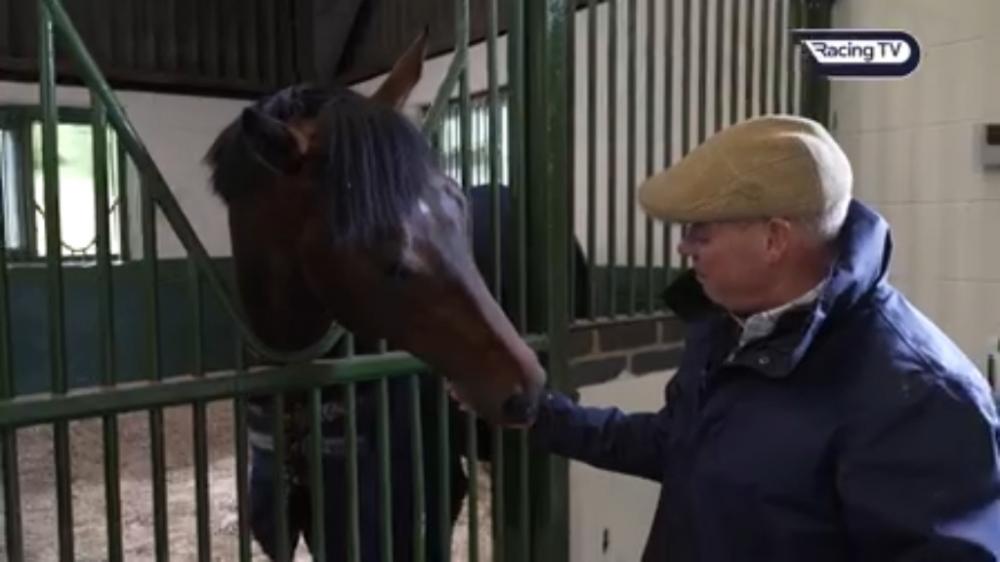RaceiQ: what the data tells us for the 1000 Guineas
By Page Fuller
Last Updated: Thu 6 Jun 2024
Fascinating insight here from Page Fuller, Editorial Analyst for RaceiQ, who reveals some in-depth data on the leading contenders in this year's QIPCO 1000 and 2000 Guineas.
By Page Fuller
All eyes will be on this weekend as the first Classics of the season take centre stage. For those of you who thought us at RaceiQ HQ only had Lengths Gained Jumping up our sleeve . . . never fear! This seems a perfect opportunity to use some of our new Flat metrics to take a closer look at the runners, some more familiar than others, but hopefully all useful as we seek to gain a deeper understanding of the sport.
In this article, I will be comparing the metrics from all of the races the confirmed runners in the QIPCO 2000 Guineas have contested, and the leading players for the QIPCO 1000 Guineas.
What is Stride Data?
Stride data is effectively the frequency with which a horse strides, multiplied by a horse's stride length, which gives us the speed of a horse. So, by making sense of this data, it will give us the ultimate insight into why a horse is able to run faster than another.
The well-held theory amongst those familiar with stride data is that a horse’s ability to turn over its stride suggests how suitable a trip is, and stride length can be indicative of a horse’s ability. We have data to work with since March 2023, and we believe this theory aligns with what we see within the data, but the more data we see, the more we learn. We look forward to having you on this journey with us!
In humans, the faster you are able to move your legs, the faster you will go, but this comes at the cost of energy. With horses, sprinters with the biggest stride length that operate around 2.4 strides per second or faster, will be able to go the fastest. However, it is very hard to maintain this frequency once the horse steps up in trip. Equally, some horses may not be able to turn their strides over as fast naturally, but this makes them more efficient, plus will help them use less energy to maintain their stride length.
Peak Stride Length

City Of Troy: a big talent, big stride
This is the longest stride length a horse has recorded within a race. What is interesting is how the ground affects stride length. As you would expect, the softer the ground, the harder it is for a horse to extend its stride.
(QIPCO 2000 Guineas)
He proved how much of a monster he is when winning the Dewhurst on soft ground, achieving a peak stride length of 8.05m. It is the fourth highest peak stride length recorded between this year’s QIPCO 2000 Guineas field. To put it into context, the next highest peak stride length recorded on soft ground is 7.68m - this was actually in the same race, and I will go into more detail below about why I think that reflects how he wasn’t seen to best effect on the ground that day.
(QIPCO 1000 Guineas)
This filly may have disappointed those who backed her in the Nell Gwyn, but the data suggests we should give her a second chance. She ran very green and took a while to get going as the pace lifted, but once she got going, she was motoring.
In that race, she recorded the longest peak stride length of any of the horses I am comparing for the QIPCO 1000 Guineas. At 7.90 meters, it’s not surprising her legs looked all over the place. However, once she got going, she also recorded the fastest furlong, clocking a 10.49 second furlong in the penultimate furlong.
Average Stride Length
This is the average stride length throughout the race, excluding the first and last furlongs as these are often skewed by horses leaving the stalls and ‘tying up’ at the end of a race.
HAATEM (QIPCO 2000 Guineas)

Trainer Richard Hannon told us more about Haatem after his Craven Stakes win
A horse that consistently hits the top spot for this metric is Haatem. To put it into context, these are the top five highest average stride length performances we have seen among the 2000 Guineas field:
1. Haatem - Epsom, Woodcote Stakes: 8.47 metres
2. Haatem - York, Gimcrack Stakes: 7.81 metres
3. Haatem - Newmarket, Craven Stakes: 7.76 metres
4. City Of Troy - Newmarket, Superlative Stakes: 7.73 metres
5. Haatem - Goodwood, Vintage Stakes: 7.71 metres
The data suggests that Haatem is more effective on better ground. If you compare his run in the Dewhurst on soft where his peak stride length was only 7.68 metres, you can hopefully understand why!
STAR STYLE (QIPCO 1000 Guineas)
Star Style won impressively on debut at Newbury where she operated at an average stride frequency of 7.77 metres, which is the highest we have seen from any of the potential 1000 Guineas runners. She is a smart prospect.
Stride Frequency
There seems to be an optimal way for a horse to operate when running over certain distances. On average at Newmarket in the past year in Class one races, the first two horses home had stride frequencies of:
7f: 2.32 strides per second (s/s)
1m-1m1f: 2.29 (s/s)
1m2f-1m3f: 2.25 s/s
As you can see, the faster a horse can turn over their stride, the better suited they are for shorter distances.
(QIPCO 2000 Guineas)

Clive Cox gives us the latest news on Ghostwriter
Most of the contenders in the QIPCO 2000 Guineas have shown the ability to operate at the optimum frequency for this distance, but it is Ghostwriter who stands out having operated at 2.29 s/s on debut at Newmarket last year, and then 2.28 s/s when he landed the Group 2 Royal Lodge.
Considering both runs were consistent with what we expect to see from a top-class miler at Newmarket, this trip could be his optimum.
PORTA FORTUNA (QIPCO 1000 Guineas)
For the QIPCO 1000 Guineas I have picked a horse that I think will NOT be suited to this trip. Yes, Porta Fortuna was a good second in the Breeders’ Cup Juvenile Fillies Turf last year, but her stride frequency is consistently high. In the Phoenix Stakes and the Cheveley Park Stakes she operated at an average stride frequency of 2.45 s/s and 2.41 s/s respectively, suggesting that the trip of six furlongs in both was well suited. She did run well over a mile in Santa Anita, but she was still operating at an average frequency of 2.39 s/s, one of the highest in the race.
‘0-20mph’ (Capturing a horse’s speed out of the stalls)
This is our newest RaceiQ metric, and it says what it does on the tin. Using this we measure the time it takes a horse to reach 20mph out of the stalls, capturing how fast (or slow) a horse leaves the stalls. Considering Newmarket is traditionally a front-runners track, being quick out of the stalls will be key if you want to get a good position. To give you a better idea of the horses that have performed well within this metric, I have listed the quickest values we have seen amongst the runners here:
QIPCO 2000 Guineas:
1. Night Raider - Southwell, 23rd March: 2.28 seconds to 20mph
2. Haatem - Newmarket Craven Stakes: 2.41seconds to 20mph
3. Ghostwriter - Royal Lodge Stakes: 2.46 seconds to 20mph
4. City Of Troy - Newmarket, Dewhurst Stakes: 2.46 seconds to 20mph
5. Inisherin - Newmarket, 28th September: 2.46 seconds to 20mph
QIPCO 1000 Guineas:
1. Star Style - Newbury, 19th April: 2.25 seconds to 20mph
2. Pretty Crystal - Newmarket, Nell Gwyn Stakes: 2.4 seconds to 20mph
3. Darnation - Haydock, 7th July: 2.46 seconds to 20mph
Finishing Speed Percentage (FSP)
NOTABLE SPEECH (QIPCO 2000 Guineas)
This horse has excelled at Kempton this winter, notching up three very impressive wins over a mile. He travelled very strongly on each occasion and quickened up smartly. As well as achieving FSPs of 115.02% in April, 109.27% in February and 111.40% in January, he was able to clock 10.81, 11.07 and 10.89 second furlongs in those races respectively, too.
This demonstrates that he has speed and class, so it will be interesting to see how he translates that into a more truly-run race like the Guineas, on his first start on turf.
ELMALKA (QIPCO 1000 Guineas)
It was Elmalka’s run at Southwell, when she won first time out, that recorded the highest FSP of all the fillies in the 1000 Guineas line-up. That day she ran very green off the bend, but once she got going, she flew home and clocked an FSP of 110.65%. It was a similar story at Newbury last time out, but she got caught on the heels of the winner, so her run came too late. She recorded the highest FSP of the field that day, too, at 107.06%, and she is sure to have come on for the experience.

Enjoy 31 days of Racing TV for free - including the Kentucky Derby, QIPCO Guineas Festival and the Dante meeting from York! .
Copyright 2024 Racing TV - All Rights Reserved.
Please bet responsibly
Copyright 2024. All rights reserved